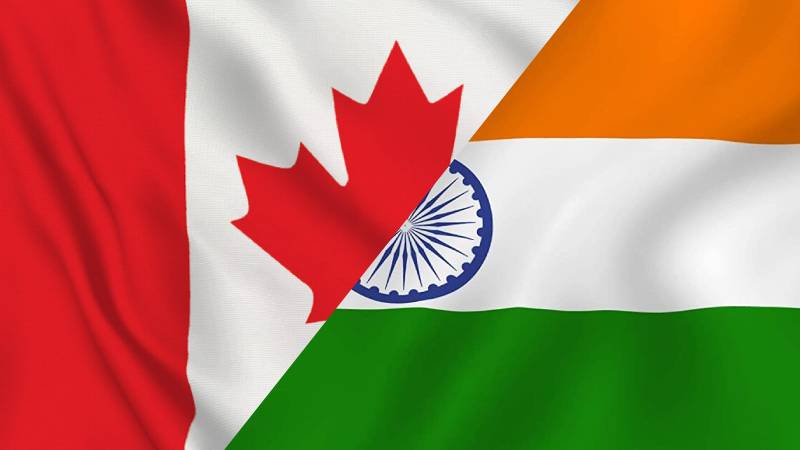Canada vs India: Education, Living, Jobs & Cost – Which is Better
Table of Contents

In the current global scenario, India vs Canada is now one of the most prevalent comparisons for students and professionals trying to choose their career direction. Each year, thousands of Indians search across borders for higher studies or for opportunities to work abroad, and Canada is always at or near the top of the list. In fact, more than 320,000 Indian students were enrolled at Canadian institutions in recent years, which indicates how well-established this trend has become.
The reasons why this never-ending debate—Canada vs India, which is better—are obvious. Both countries have something to offer that is different, whether it’s India’s fast-growing job opportunities and low-cost education or Canada’s globally accepted degrees and high life quality. To respond to this, one must research life in Canada vs India.
This blog breaks down the key areas of comparison: the education system in Canada vs India, job opportunities, living standards, and overall costs. By the end, you’ll have a clearer picture of which destination may align better with your goals.
Education System: Canada vs India
In speaking about the education system in Canada vs India, perhaps one of the largest differences is in structure and emphasis. Indian higher education is expensive, with world-famous schools such as the IITs, IIMs, and AIIMS churning out top professionals. However, the system is reputed to be more theory-oriented and exam-focused. In contrast, Canada’s universities focus more on practical application, business exposure, and research-based education, which proves more useful for international careers for many students.
Canadian institutions feature prominently in international rankings, with Toronto, British Columbia, and McGill universities leading in terms of innovation and research. Such international recognition makes career opportunities globally even stronger. In India, though some elite colleges have robust reputations, the quality across India varies, and thus, access to top-notch education is highly competitive.
Another crucial aspect in India vs Canada comparisons is cost. Education in Canada is much more expensive, typically between CAD 15,000–30,000 annually, but scholarships and part-time job support reduce costs. Meanwhile, education in India is comparatively low-cost, particularly in state-run schools, but international exposure and networking are limited.
Ultimately, when comparing Canada vs India, which is best for education, Canada provides greater international recognition and career opportunities abroad, whereas India offers affordability and increasing domestic opportunities.

*OpenJaw.com
Cost of Living: Canada vs India
When comparing the cost of living in Canada and India, the difference is quite large. Housing tends to be the biggest expense in Canada. Rentals in cities like Toronto and Vancouver average CAD 1,500 to 2,500 per month for a one-bedroom apartment. In contrast, housing in Indian cities is much more affordable, though prices vary widely between large cities like Mumbai and smaller towns.
Daily expenses such as food and transportation also differ. Groceries and dining out are noticeably more expensive in Canada, while India offers a wider range of budget-friendly options. Public transport in both countries is reliable, but Canada’s system is more structured and costly compared to India’s affordable alternatives.
Healthcare is an important aspect in the India and Canada discussion. Canada provides publicly funded healthcare for residents, ensuring access, though wait times can be long. In India, healthcare costs are generally lower, but the quality and access depend on whether one chooses public or private facilities.
Lifestyle is another factor to consider. Living in Canada versus India shows the trade-off. Canadian cities offer higher living standards, cleaner environments, and better infrastructure. At the same time, India provides cultural diversity, affordability, and strong family-oriented living. Ultimately, the choice comes down to balancing affordability with the living standard one seeks.
Job Opportunities & Career Growth
A key factor in deciding whether Canada or India is better is career growth. Canada attracts international students and skilled workers with its strong job market in fields like IT, healthcare, engineering, and finance. Many students benefit from post-study work permits, which can lead to permanent residency, making Canada an appealing option for the long term. Salaries are competitive, and while taxes are higher, they fund public services like healthcare and education.
In India, the job market has experienced explosive growth, especially in IT services, startups, fintech, and healthcare. With its rapidly growing economy, India offers diverse opportunities for young professionals. While salaries may be lower compared to Canada, the lower cost of living in India complicates direct comparisons. Many professionals in India enjoy a comfortable lifestyle due to affordable housing, food, and services.
Work-life balance also varies. Canada generally promotes flexible schedules, shorter workweeks, and a focus on well-being. In India, professionals often work longer hours, though the entrepreneurial culture and opportunities in emerging sectors can be highly rewarding.
In terms of long-term career growth, the education systems in Canada and India play a role. A degree from Canada often opens international doors, while India offers strong local networks and booming domestic markets. For global exposure and stability, Canada is appealing; for dynamic growth within a rapidly developing economy, India is competitive.
Social & Cultural Life
In comparing life in Canada vs India, culture and society dominate the entire experience. Canada is famously multicultural, where foreign students and workers from all over the world coexist and commute with one another. Inclusiveness is a prominent feature of life in Canada, where policies and social norms promote equality and diversity. Celebrations such as Canada Day, multicultural parades, and community events make newcomers feel at home.
India, however, provides rich traditions along with great diversity. Each state has its own festivals, languages, cuisine, and arts, so social life is vibrant and dynamic. The community spirit and feeling of family and close relationships are still paramount in Indian culture, which reassures many professionals and students.
As far as adaptability is concerned, Canada presents a smoother transition for foreign students with support systems, while Canada’s expensive cost of living versus India’s is an issue. India, being culturally familiar to locals with affordability, is comfortable but possibly less welcoming to foreigners. Overall, when considering Canada vs India, which is better, lifestyle adaptability is based on whether global multicultural exposure or traditional community-based living is important.
Overall Costs Comparison
When comparing India to Canada, the actual comparison is done by considering education, living, healthcare, and travel in conjunction with each other. Canada typically demands a much greater initial investment. Tuition fees alone may cost CAD 15,000–30,000 a year, and add accommodation, food, transport, and healthcare costs, the total cost can be over CAD 40,000 annually. Nevertheless, Canada provides great long-term paybacks in the form of highly recognized degrees globally, options for post-study work, and the chance for permanent residency.
India, on the other hand, offers affordability in all aspects. Public school education is much lower in cost, and everyday expenses like food, rent, and local transportation are still within control even for metro cities. Healthcare is also less expensive, but quality tends to fluctuate between public and private systems.
From a value-for-money point of view, life in Canada versus India is two alternate routes. Canada requires greater upfront expenditure but tends to reward with superior global prospects and increased wages. India, while cheaper, has increasing domestic prospects in a rapidly expanding economy. Whether you prefer affordability immediately or international prospects in the future, it essentially comes down to Canada vs India, which is better.
Advantages & Drawbacks of Studying/Residing in Canada vs India
Canada’s vs India’s education systems and way of life present particular strengths and weaknesses.
Canada –Pros: Students enjoy international exposure, exposure to top-ranked universities, research, and a multicultural environment. Professional development is facilitated with competitive pay and access to permanent residency. Quality of life, healthcare, and infrastructure are robust as well.
Canada – Cons: The living cost in Canada compared to India is very high, the climate can be extremely unforgiving, and visa policies tend to introduce uncertainty for foreign students.
India – Pros: Education is much cheaper, and the rapidly growing economy offers opportunities in IT, startups, finance, and healthcare. Proximity to family and cultural comfort provides familiarity.
India – Cons: There is stiff competition for the best institutions and jobs. Degrees have less international recognition than Canadian universities, and there are still infrastructure gaps.
So, when comparing Canada vs India, which is best, Canada provides international recognition and long-term stability, and India has the option of being affordable and close to home in a fast-emerging market.
Conclusion
The debate between India and Canada doesn’t have a straightforward answer. Each country has its own strengths in education, lifestyle, career opportunities, and overall costs. The education systems in Canada and India highlight these differences. Canada focuses on practical, globally recognised learning, while India is known for affordability and strong local connections. Similarly, life in Canada offers multicultural exposure, while India provides a traditional, community-focused way of living.
Ultimately, deciding whether Canada or India is better depends on your personal goals. If you are looking for international careers, higher salaries, and a long-term move abroad, Canada might be a worthwhile investment. On the other hand, if you value affordability, being close to family, and growth in a vibrant local economy, India could be a better fit.
Before making a choice, it’s important to consider your priorities, including career goals, finances, and lifestyle expectations. The right decision isn’t about which country is “better,” but about which one fits your personal aspirations.
Frequently Asked Questions
Is Canada or India better?
It depends on priorities—Canada offers global exposure and higher salaries, while India provides affordability and fast-growing local opportunities.
Who is more powerful, India or Canada?
India has more military power and global presence, whereas Canada possesses economic stability and global alliances.
Which country is richer, India or Canada?
Canada is richer per capita, yet India’s total economy is bigger because of its huge population and its fast growth.
How much is the Indian salary equal to the Canadian salary?
Canadian wages, on average, are 4–6 times those of Indian wages, although the higher cost of living in Canada compared to India counters this.
Is tax more in India or Canada?
Canada’s income tax rates are higher in general, but they pay for public services such as healthcare and education, in contrast to India’s system.






![CISA Salary: 2025 Complete Earnings [Freshers to Experienced]](https://jaro-website.s3.ap-south-1.amazonaws.com/2025/10/CISA-Salary-2025-Complete-Earnings-Freshers-to-Experienced-1024x576.webp)











